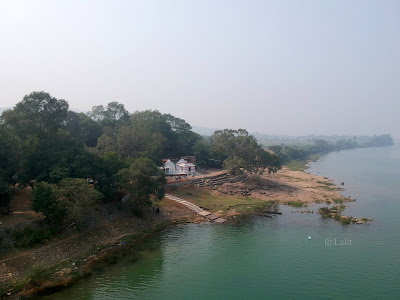Nestled in the Chandaka forest on the banks of Mahanadi River the small town
of Banki in Cuttack district is home to many places of tourist attraction. But
this rather unknown treasure trove is tucked away in a sleepy
village of the
district under Dompara block.
Not far from the nearest human habitation, in Kushpangi village exists two
unexplored ancient caves–‘Anahata’ and ‘Dakshin Kabata’— with many local
legends and myths surrounding their mysterious existence for over many
centuries.
Etymologically, the Anahata cave derives its name from its
long and unhindered tunnel running an unknown distance. No one has measured its
length so far.
Locals said long ago saints used to meditate in the cave and the place used
to be a hub for spiritual attainment in the past. Some ancient scripts
scribbled on the cave walls as well as wall paintings that resemble Egyptian
hieroglyphs, appears to be of pre-historic period. While some believe that
those carvings could be of religious significance; to others, those could be a
guide map for the maze of paths running through the cave.Some villagers claim
to have heard the sound of Vedic Chants and beating of gongs emanating from the
cave at night.

Local folklore apart, these lesser-known caves have significant history
etched on its walls, which if decoded could lead to the discovery of an ancient
civilisation older than Harappa and Mohenjo-Daro. Researcher Lalit Mohan Panda,
who also happens to be a state-level guide affiliated with Odisha Tourism,
said, “The paintings on the cave wall dates back to the Stone Age, 4000 BC.”
In 2015, a team from the Centre for Rural Tourism Development (CRTD), Odisha
found signs of human settlements, which they stated were as old as 8,000 years
to the north of the Chandaka forest. They believed that there was human settlement
in the hill caves located in the Chandaka forest.
During the three-month-long research in the wildlife reserve, the CRTD team
found many ancient rock paintings. Those included artwork on animals, dancing
postures, hunters and geometrical signs which were the manifestation of
activities of people living on the north of Dompara forest areas in 6000 BC.
There are in fact other caves, adjacent to the two mysterious caves which
bear signs of human settlements in ancient times. Locals and intellectuals in the
know of things have long been demanding the government to conduct proper
research on these caves and decipher the paintings and carvings on the walls.
 Banki: The Devi Dwar tourist spot in Banki-Dampada block, 30 km from Bhubaneswar, is a rare place of attraction for tourists during winter.
Banki: The Devi Dwar tourist spot in Banki-Dampada block, 30 km from Bhubaneswar, is a rare place of attraction for tourists during winter.

